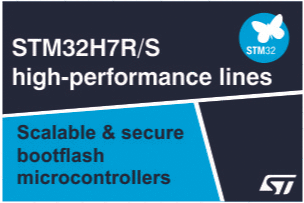Includes open-source heart-rate/SpO2 algorithm for quick prototyping Now available at Seeed Studio
San Jose, CA—December 1, 2016—Developers of heart rate and blood oxygen (SpO2) monitors can now accelerate their efforts using the ultra-small MAXREFDES117# reference design from Maxim Integrated Products, Inc. (NASDAQ: MXIM).
 This optical heart-rate module reference design incorporates red and infrared LEDs, a sensor, power subsystem, and logic level translation. Measuring 13mm x 13mm, this tiny, low-power board can be placed on a finger or earlobe to accurately detect heart rate and SpO2 via personal wearable devices. The module works with both Arduino® and ARM® mbed™ platforms for ease of design, testing, and system integration, and includes eight “tap pads” for quick electrical connection to a development platform and/or wearable garment.
This optical heart-rate module reference design incorporates red and infrared LEDs, a sensor, power subsystem, and logic level translation. Measuring 13mm x 13mm, this tiny, low-power board can be placed on a finger or earlobe to accurately detect heart rate and SpO2 via personal wearable devices. The module works with both Arduino® and ARM® mbed™ platforms for ease of design, testing, and system integration, and includes eight “tap pads” for quick electrical connection to a development platform and/or wearable garment.
Maxim, already a leader in bio-sensing applications with more than 200 million units shipped, now provides this simple platform to enable all developers. The reference design includes three Maxim chips: a pulse oximeter and heart-rate sensor (MAX30102); an efficient, low-power step-down converter (MAX1921); and an accurate level translator (MAX14595). The design requires only a single 2 V to 5.5 V supply and typically dissipates less than 5.5mW when using the included firmware.
Key Advantages
- Ease-of-Use: Compatible with both Arduino and ARM mbed platforms to simplify set-up
- Fast Time-to-Market: Includes open-source heart-rate and SpO2 algorithm; BOM; schematics; layout, and Gerber files to accelerate development
- Versatile: Can be used for product development or as a module in the final design
Commentary
- “Maxim is providing a basic open-source heart-rate and SpO2 algorithm as part of the firmware, and we encourage users to build upon it,” said David Andeen, Director of Reference Designs at Maxim Integrated. “Makers and developers can use this either as a ‘starting point’ reference design, or embed any variation in their final product or project.”
- “As we continue to bring innovative designs to our customers, we have started a collaboration with Maxim—this is the first product we manufactured and built with them,” said Joey Jiang, Marketing Product Director,Seeed Studio. “We’re excited to see what people will make with this reference design.”






